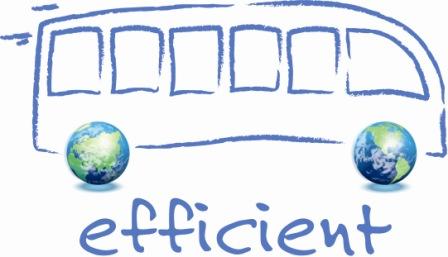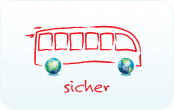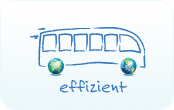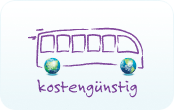|
Home  Beste Praktiken Beste Praktiken  Policy makers Policy makers
Accessibility
|
| // GPS applications for blind or disabled bus riders |   While transit systems make some allowances for riders who may be unable to see or hear when the bus arrives, or they themselves have arrived at their stop, there are doubtless many riders who could use some additional help. GPS apps for riders of public transit who are blind, deaf or otherwise disabled tell them how many stops they will be riding for, and when to activate the "stop" cord or button. Once returned to the pavement, they continue guiding them to their destination with walking directions. Such apps should also accept voice input or writing with symbols, and include separate interface designed for people with severe visual impairment or total blindness. While transit systems make some allowances for riders who may be unable to see or hear when the bus arrives, or they themselves have arrived at their stop, there are doubtless many riders who could use some additional help. GPS apps for riders of public transit who are blind, deaf or otherwise disabled tell them how many stops they will be riding for, and when to activate the "stop" cord or button. Once returned to the pavement, they continue guiding them to their destination with walking directions. Such apps should also accept voice input or writing with symbols, and include separate interface designed for people with severe visual impairment or total blindness.
Example: Researchers in Barcelona have created an app for riders of public transit who are blind, deaf or otherwise disabled. On The Bus hooks into GPS and transit data from a city and alerts the user where and when they need to board, signal and disembark. The OnTheBus database currently supports buses in Barcelona, Madrid, and Rome, in several languages. The app is available now for the Android operating system. |
For more information: On the bus: http://bit.ly/MUAu95
| | // Easy accessibility buses and coaches for people with reduced mobility |   Low-floor buses, lower ticketing machines, escalators, elevators, assistance and special training are all factors which encourage people with reduced mobility to favour the use of buses and coaches. Due to the ageing population in developed countries, the use of buses and coaches is constantly gaining in importance. Low-floor buses, lower ticketing machines, escalators, elevators, assistance and special training are all factors which encourage people with reduced mobility to favour the use of buses and coaches. Due to the ageing population in developed countries, the use of buses and coaches is constantly gaining in importance.
Example: Stagecoach North East has introduced a "buddy scheme" program permitting people with reduced mobility or people with problems to become independent and overcome their fears by travelling independently. Stagecoach Oxfordshire boasts 170 low-floor buses which are all accessible for wheelchairs and pushchairs. | For more information: Public transport, the green and smart solution, UITP
http://www.uitp.org/advocacy/pdf/new_pt_strategy.pdf A sustainable future for transport, DG Energy and Transport, European Commission
http://ec.europa.eu/transport/publications/doc/2009_future_of_transport_en.pdf Greener Smarter Together, Corporate Social Responsibility Report 2009, Stagecoach group, p.11 http://www.stagecoachgroup.com/scg/media/publications/policydocs/csr2009.pdf | | // Information about low-floor bus schedules or accessible coaches |   Information on bus routes which are served by a mixture of low-floor buses and non low-floor buses should be made available at bus stops, online, in service centres, etc., by indicating the schedules for low-floor buses. This allows people with reduced mobility to make their travel arrangements efficiently, in advance. Information on bus routes which are served by a mixture of low-floor buses and non low-floor buses should be made available at bus stops, online, in service centres, etc., by indicating the schedules for low-floor buses. This allows people with reduced mobility to make their travel arrangements efficiently, in advance. Example: In Hamilton, Ontario, the city council publishes bus schedules for all its routes, indicating whether a low-floor bus serves the route at a certain departure time. | | | |
|
|
|
|
|
|
|














